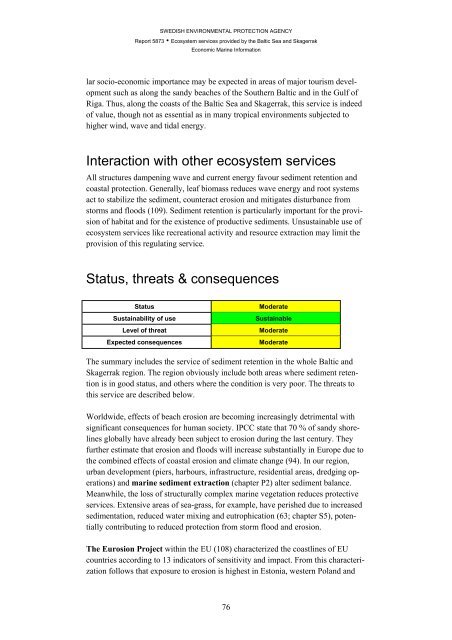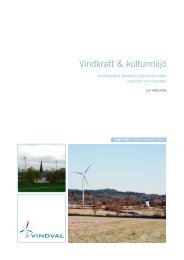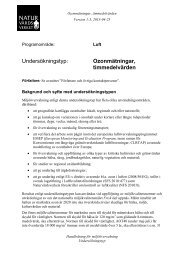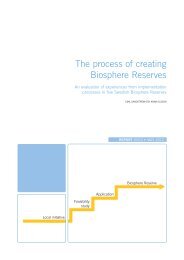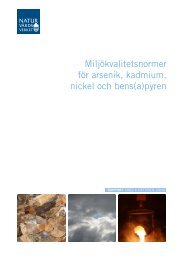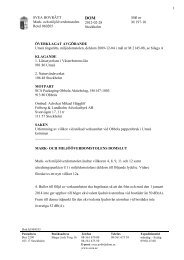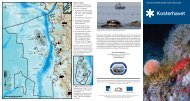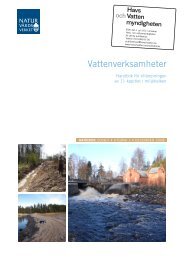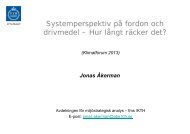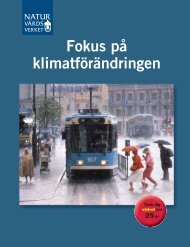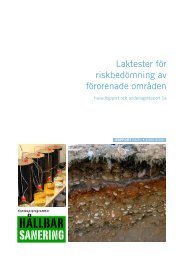Ecosystem services provided by the Baltic Sea ... - Naturvårdsverket
Ecosystem services provided by the Baltic Sea ... - Naturvårdsverket
Ecosystem services provided by the Baltic Sea ... - Naturvårdsverket
Create successful ePaper yourself
Turn your PDF publications into a flip-book with our unique Google optimized e-Paper software.
SWEDISH ENVIRONMENTAL PROTECTION AGENCY<br />
Report 5873 • <strong>Ecosystem</strong> <strong>services</strong> <strong>provided</strong> <strong>by</strong> <strong>the</strong> <strong>Baltic</strong> <strong>Sea</strong> and Skagerrak<br />
Economic Marine Information<br />
lar socio-economic importance may be expected in areas of major tourism development<br />
such as along <strong>the</strong> sandy beaches of <strong>the</strong> Sou<strong>the</strong>rn <strong>Baltic</strong> and in <strong>the</strong> Gulf of<br />
Riga. Thus, along <strong>the</strong> coasts of <strong>the</strong> <strong>Baltic</strong> <strong>Sea</strong> and Skagerrak, this service is indeed<br />
of value, though not as essential as in many tropical environments subjected to<br />
higher wind, wave and tidal energy.<br />
Interaction with o<strong>the</strong>r ecosystem <strong>services</strong><br />
All structures dampening wave and current energy favour sediment retention and<br />
coastal protection. Generally, leaf biomass reduces wave energy and root systems<br />
act to stabilize <strong>the</strong> sediment, counteract erosion and mitigates disturbance from<br />
storms and floods (109). Sediment retention is particularly important for <strong>the</strong> provision<br />
of habitat and for <strong>the</strong> existence of productive sediments. Unsustainable use of<br />
ecosystem <strong>services</strong> like recreational activity and resource extraction may limit <strong>the</strong><br />
provision of this regulating service.<br />
Status, threats & consequences<br />
Status<br />
Sustainability of use<br />
Level of threat<br />
Expected consequences<br />
Moderate<br />
Sustainable<br />
Moderate<br />
Moderate<br />
The summary includes <strong>the</strong> service of sediment retention in <strong>the</strong> whole <strong>Baltic</strong> and<br />
Skagerrak region. The region obviously include both areas where sediment retention<br />
is in good status, and o<strong>the</strong>rs where <strong>the</strong> condition is very poor. The threats to<br />
this service are described below.<br />
Worldwide, effects of beach erosion are becoming increasingly detrimental with<br />
significant consequences for human society. IPCC state that 70 % of sandy shorelines<br />
globally have already been subject to erosion during <strong>the</strong> last century. They<br />
fur<strong>the</strong>r estimate that erosion and floods will increase substantially in Europe due to<br />
<strong>the</strong> combined effects of coastal erosion and climate change (94). In our region,<br />
urban development (piers, harbours, infrastructure, residential areas, dredging operations)<br />
and marine sediment extraction (chapter P2) alter sediment balance.<br />
Meanwhile, <strong>the</strong> loss of structurally complex marine vegetation reduces protective<br />
<strong>services</strong>. Extensive areas of sea-grass, for example, have perished due to increased<br />
sedimentation, reduced water mixing and eutrophication (63; chapter S5), potentially<br />
contributing to reduced protection from storm flood and erosion.<br />
The Eurosion Project within <strong>the</strong> EU (108) characterized <strong>the</strong> coastlines of EU<br />
countries according to 13 indicators of sensitivity and impact. From this characterization<br />
follows that exposure to erosion is highest in Estonia, western Poland and<br />
76


